Best 21 B2B Lead Generation Strategies To Boost Sales Growth
Do you know according to a study, 61% of marketers find B2B lead generation to be a tough task? As a sales professional, you can’t agree more! The buyers are well-aware and well-informed thanks to the Internet. If that was not enough, you have to deal with the cut-throat competition that keeps shaking the foundation of every business. Thus, you need to learn the top B2B lead generation strategies.
Sure, you could contact a lead generation agency and have the work done for you. However, if you want to take the matters into your own hands, you’ll have to keep trying new ways to generate leads. This is exactly what this blog post helps you with!
Find ways to improve the quality of leads generated, steps to build a B2B outbound lead generation process, with strategies and top tools that can help you save time.
So, without much ado, let’s get started.
Table Of Contents
- What Are The Types Of B2B Leads?
- What Is B2B Lead Generation?
- Benefits Of B2B Lead Generation
- Best B2B Lead Source
- Who Conducts B2B Lead Generation?
- Ways To Improve B2b Lead Generation Quality
- How To Build A B2B Lead Generation Process?
- B2B Lead Generation Strategies That Work
- 1. Automate email marketing
- 2. Send cold emails
- 3. Create high-quality content around the audience’s questions
- 4. Write guest blogs actively
- 5. Provide social proof
- 6. Personalize your cold outreach
- 7. Keep your website mobile-friendly
- 8. Focus on creating a good website design
- 9. Adding an SSL certificate to your website
- 10. Stay active on LinkedIn
- 11. Build a community on social media
- 12. Leverage Quora To Get Leads
- 13. Conduct a webinar
- 14. Organize and attend events
- 15. Get user reviews
- 16. Ask clients for referrals
- 17. Track actions of website visitors
- 18. Create a free tool
- 19. Offer valuable lead magnets
- 20. Create YouTube Videos
- 21. Make the most of FOMO
- B2B Lead Generation Tools
- FAQs
What Are The Types Of B2B Leads?
Before we start with B2B sales lead generation, it is important to know what leads are and what are the types of B2B leads.
A lead is an individual or organization that has an interest in your product or service. A B2B lead is for business to business sales.
Now let’s move on to the types of B2B leads.
Cold leads – This type of lead is not aware of your product or service and does not expect you to contact them.
Warm leads – A warm lead is one who has an interest in your product or service already. They would have signed up for your newsletter or builder form.
Inbound leads – These types of leads reach out to you directly or through referrals. In a way, they are the ones who show an interest in your offering and get the ball rolling.
Outbound leads – You have to reach out to these leads, and they are most often cold leads who don’t know about you and your business.
What Is B2B Lead Generation?
B2B lead generation refers to identifying potential customers and attracting them to make a purchase. This activity is crucial for sales and marketing teams in B2B organizations.
You must be aware that here B2B refers to business-to-business. It means businesses that sell to other businesses. This is different from B2C or business-to-consumer lead generation, where businesses sell their products/services directly to consumers.
Coming back to B2B lead generation, the fact is that a business can flourish when you get more leads which is why lead generation software is an inseparable part of any business.
Lead generation involves both sales and marketing teams. Before reaching the sales team, the marketing lead has to go through a qualification process to get the label for sales-qualified leads. However, a sales lead will get an entry straightaway.
The marketing team’s job is to generate leads, and the responsibility of the sales team is to pick leads of high quality and convert them.
Let’s take a closer look at the benefits lead generation has to offer before moving on to B2B lead generation strategies.
Benefits Of B2B Lead Generation
Lead generation helps sales and marketing teams in,
1. Identifying the target market and determining the positive response a sales pitch will get. It lets teams know their potential customers and see whether the sales pitch aligns with their interests.
2. Providing the latest customer data to help get in touch and engage with the right prospects.
3. Creating more targeted content that is both useful and relevant to prospects as teams know the interests and preferences of prospects better. It makes the business’s online presence felt and builds brand awareness.
4. Tracking and analyzing marketing activities.
Best B2B Lead Source
Take a look at the different lead sources and the percentage of leads from each of them.

Who Conducts B2B Lead Generation?
As you would be aware, B2B lead generation is the key responsibility of sales and marketing teams. To make the whole process work smoothly, both the teams have to work in unison.
In the sales team, the sales development representatives and business development managers actively participate in lead generation.
In the marketing team, the demand generation marketers and growth hackers focus on generating leads.
Ways To Improve B2B Lead Generation Quality
While you need to scale up your business, you must focus on their quality. It is useless to have 100 leads when only 10 of them convert to paying customers. You can improve the quality of leads using the following ways,
1. Targeting keywords
When you use keywords in your content on the web, it signals search engines that you can help internet users solve specific problems. Your ranking in search results depends on the keywords. It is preferable to give importance to long-tail keywords as they resemble the search queries of leads.
2. Designing targeted landing pages
Segment your target audience and try to create separate landing pages for every segment. This will make them more likely to turn into leads. Mention what your company can offer and try to educate the visitors about your website.
3. Design forms
Gather information like company name, job role, and industry from sales leads by designing forms. It will help you know the kind of audience your website is attracting. Here is one that would help you build a lead qualification checklist
How To Build A B2B Lead Generation Process?
Ideal customer profile and buyer persona are two components of B2B lead generation for sales, without which you cannot build the right b2b sales strategies for generating leads. While an ICP (ideal customer profile) guides you towards the types of companies you must target, a buyer persona helps you know the people you should target.
An ideal customer profile helps you choose your customers. It helps you pursue leads that have a higher likelihood of turning into paying customers and have a high probability of remaining happy with your product or service. Having a clearly defined ideal customer profile will prevent issues like customer churn.
While it is beneficial to have a well-defined ICP, it can be a challenge for businesses, especially those that have just started. Usually, new businesses sell to anyone who wishes to purchase their product or service. But with a clear ICP, they have to concentrate on a specific type of customer and exclude others. Another reason that makes it challenging to identify an ICP is that most businesses feel they have intuitive answers.
It would be best if you had a framework to choose the right customer profile and focus on it. RTLS can help you to find prospects and convert them into customers, is it worth your time. Find out what other marketers use to generate more leads with these powerful techniques.
Step 1: Identify the ideal customers
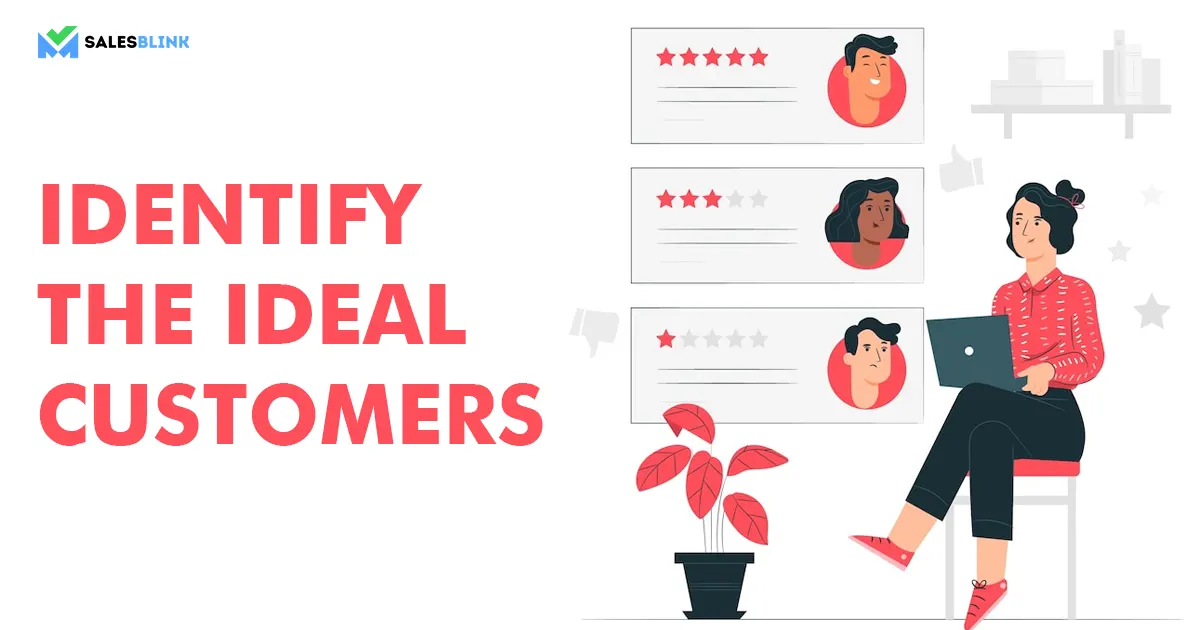
In the first step, you have to glance through your existing customers and pick those in the ideal customer list.
Score your customers based on the following filters,
1. Are customers able to achieve true success by using your product or service?
A product aims at meeting specific needs and solving a purpose. It can help customers to increase their profit, write better blogs or reach out to prospects easily. It is often easy to find whether the customers are getting results by using your product or not.
For instance, if your product is an email signature generating tool, it has to help the user generate high-quality email signatures quickly in a short period.
You have to study the existing customers and find out if your product can deliver what it promises. You have to see what benefits the customers can enjoy and find out who enjoys more benefits than the rest. Also, note that if a customer is happy with your product, it doesn’t mean they can succeed by using it. It is more important for the product to help them succeed rather than make them happy.
2. Is the value that the product gives more than the price customers are paying?
You can gauge the above question by asking yourself how many of the existing customers will choose to remain with you if you increase the price of your product by 2 -3 times. These customers are the ones who get the maximum value from your product. When you focus on this segment of customers, you can scale up faster.
3. How happy are customers with your product?
After finding customers who can achieve success with your product, you have to find those who are happy with you. Usually, the customers are happy with your product because of various reasons. It can be because they find your product’s features useful and are satisfied with your support team.
After you have a list of worldwide buyers who are happy with your product and have achieved success, you need to do further filtering.
4. Customers’ expansion potential
Find who in your happy customer list has the maximum potential to expand revenue. They will consume your product more than others, and you must place such customers on top of the ideal customer list.
5. Support needed
See who on your list are the easiest to support i.e., how much assistance they need. The customers who need the minimum support are ideal for you.
6. Higher ACV
It is better to pursue customers with higher ACV or annual contract value than smaller customers if you want to grow your business.
7. Sales cycle
A shorter sales cycle is always better for you. Small businesses tend to close a deal faster than larger enterprises. This makes the former more beneficial as far as custom acquisition cost is involved.
Step 2: Study the ideal customer list and find common patterns to create an ideal customer profile.
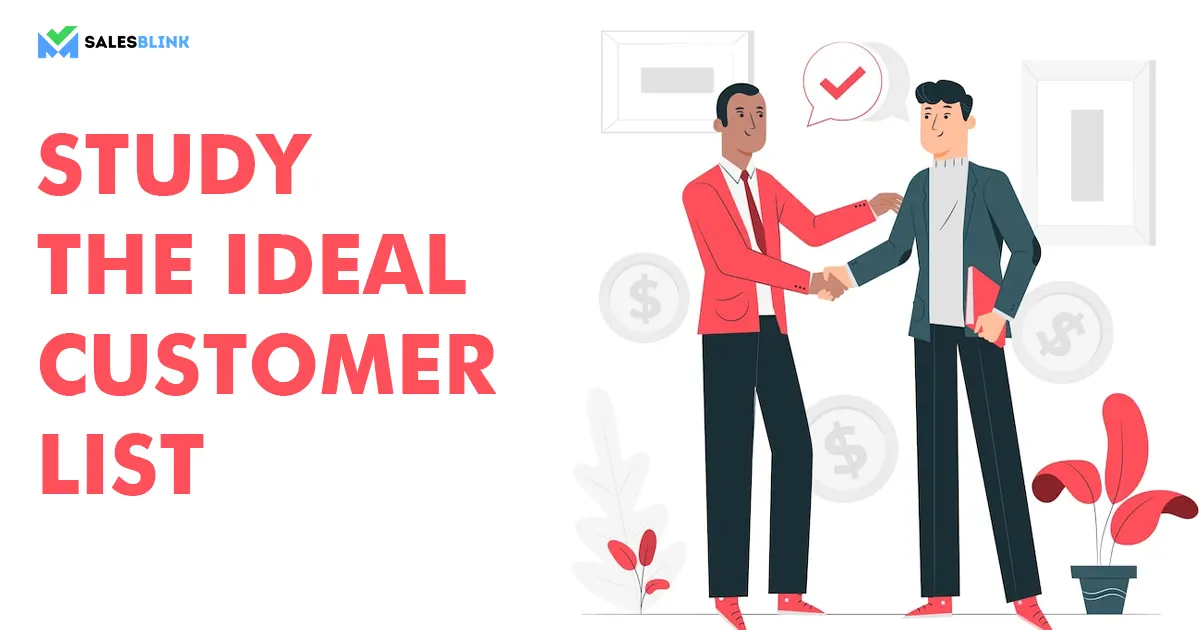
In this step, you would study more about your ideal customers and find common patterns.
1. Add details of organizations
Add company-specific details to the customer list such as the industry, number of employees, growth rate, target market, etc.
Doing so will help you pick the common threads among the successful customers. Find whether they come from the same industry or have the same employee strength etc.
2. Enrich company data with proxy metrics
Use proxy metrics relevant to your product to understand customers better. For instance, if you are selling an SEO tool, your customer’s website traffic can be a proxy metric.
3. Find out which solution they used previously
Find out what the customers used to do before using your product. Were they doing tasks manually or using another product? If most of your customers made a switch to your product from another one, it would be a good idea to pursue that competitor’s customers.
4. What other software do they use?
It will be helpful for you to know which technology or software your customers are using. For example, when you sell a sales automation tool, it will be good to know which CRM most of your customers are using. If you find that most of your customers use one particular CRM software, it can help you add that information to your ideal customer profile.
5. Use the jobs to be done framework
The JTBD or jobs-to-be-done framework helps understand the customer’s motivations. It provides triggers that help understand when a prospect starts looking for a solution to their problem. Approaching the prospect during this trigger event increases the likelihood of making a sale.
Step 3: Buyer personas
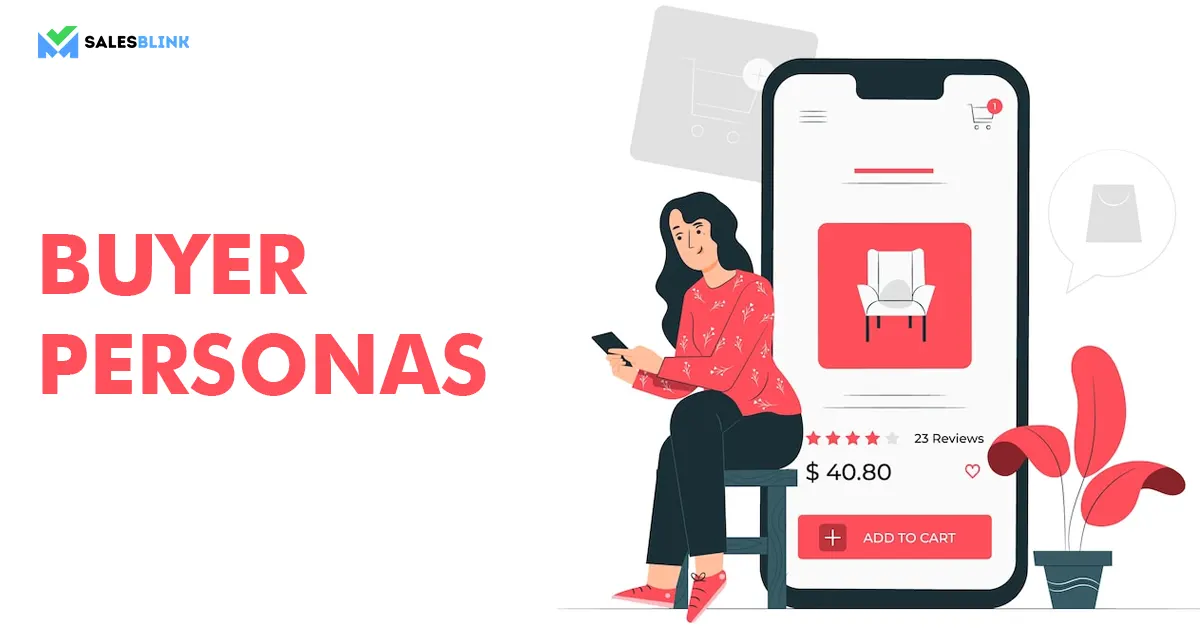
After being ready with a well-defined ideal customer profile that will help you target the right companies, you would need to deal with several people in those companies, and for that, a buyer persona would help you.
Let’s find out who is a part of the sales process by revisiting the ideal customer list,
1. Understand who are the users, influencers, and decision-makers
Look at each company in the ideal customer list and see who all were a part of the purchase process. Who was the person you first met when you approached the company? Who were the final decision-makers and the stakeholders in the purchasing process? Find out how all of them benefit by using your product and how they can help you grow your business.
2. Find the role, title, department
This is basic research you can do on networking sites like LinkedIn, which will help you identify whether the decision makers of every ideal customer have a similar job title. You can find out if they are directors, VPs or CXOs.
3. Identify the responsibilities of the person
Once you know what the person is trying to find a solution for, you can find out what kind of approach will be suitable to reach out to them.
4. Know their constraints
It will be easier to present your product when you know the decision maker’s main constraint. It can be anything from lack of funds to less workforce.
5. Understand who they report to
Find out who the person reports to and who reports to them, the seniority, their access to the budget, and other related details.
6. Gather demographic information and personality traits
The person’s age, qualification, skills, background, and much more fall in the demographic category while the personality traits comprise the person’s interests, whether they are data-driven or a value seeker and so on.
7. What content do they consume?
Find out which blogs, and publications they read most often. Take a look at their favorite influencers and where they get to know about new ideas and trends. Get to know which communication channel they use and how they research for new products.
8. Understand their awareness level
Where does the person stand as far as the awareness level is concerned? It is much easier to convince someone who is aware of the problem and knows that there is a solution to it than an unaware person. Based on the person’s level of awareness, you can decide to keep the sales pitch educational or transactional.
All the above data is enough to build buyer personas.
Step 4: Carry out focussed B2B lead generation
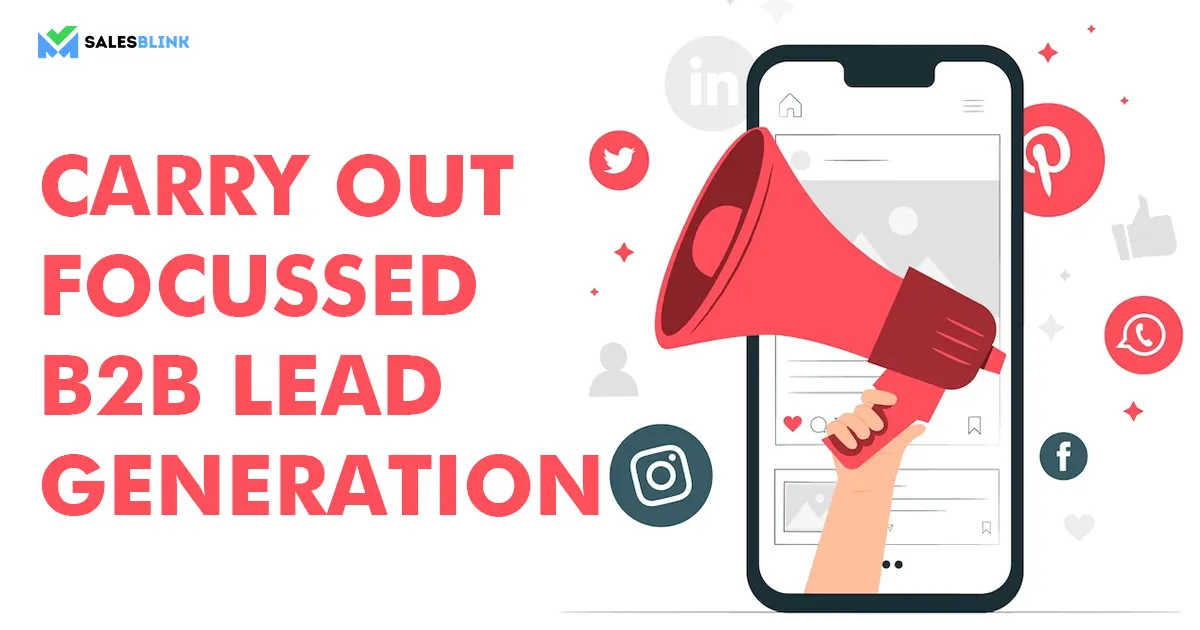
With the Ideal Customer Profile and buyer persona in place, you can choose the best approach to find customers who match them. You can use any strategy to generate saas leads once you know who you want to target.
B2B Lead Generation Strategies That Work
A good B2B lead generation strategy can go a long way in helping your sales pipeline grow at a steady pace. Here is a list of some B2B lead generation ideas that work,

1. Automate email marketing
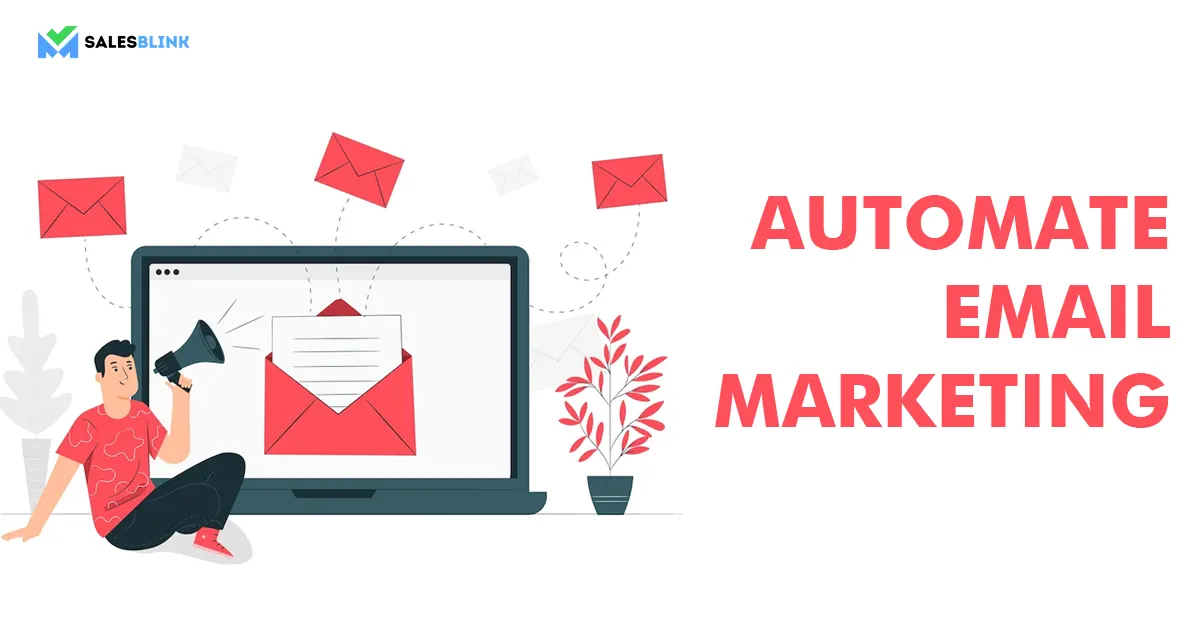
At present, half of the businesses are using tools to automate email marketing. With email marketing automation, when a lead takes a particular action, a targeted email gets triggered and hits their inbox automatically.
Let’s say a lead downloads an ebook; they become a part of the sales funnel and automatically receive an email with additional information about the products and services the company offers.
It is essential to send welcome emails for each milestone the lead accomplishes to stay upbeat. An email marketing tool would help you save a lot of time for the marketing and sales team. It is also possible to hire an email marketing agency if you wish to.
2. Send cold emails
In sales, the best way to generate leads is by sending cold emails. Cold emailing for B2B lead generation allows businesses to reach a wide audience at lower costs and minimal effort compared to other methods. In addition, it enables connection-building instead of waiting for leads to come to you.
Cold emails can target specific industries, roles, or company sizes, making them an effective option. They can quickly deliver value propositions directly to decision-makers. Despite their name, well-researched and personalized cold emails can create warm leads, kickstart relationships, and open up opportunities for further sales conversations. Cold emailing is an essential lead-generation strategy.
You can automate outreach sequences with SalesBlink and send follow up emails on autopilot. Try our 7 day free trial and see how it can help you get more leads down the funnel.
3. Create high-quality content around the audience’s questions
One of the most essential B2B lead generation tactics is creating high-quality content for blogs. The content you publish in the company’s blogs goes a long way in helping you generate leads. Most companies spend more time writing blogs than writing emails. It is better to write blogs to answer the questions your target audience has in their minds. You can ask salespeople to share questions that prospects put up most often. In addition to that, prospects ask questions through email and social media as well. The answers that require a detailed explanation can become a blog post. So, whenever you think about topics for your blog, choose topics that will attract more leads.
Keep in mind that you have to publish blogs regularly if you want to build credibility and increase the reach and exposure of your content. Make sure that it provides value to the reader to make them trust you and turn into loyal customers. As per a study, 51 percent of B2B buyers depend on content (blog posts) to make buying decisions.
4. Write guest blogs actively
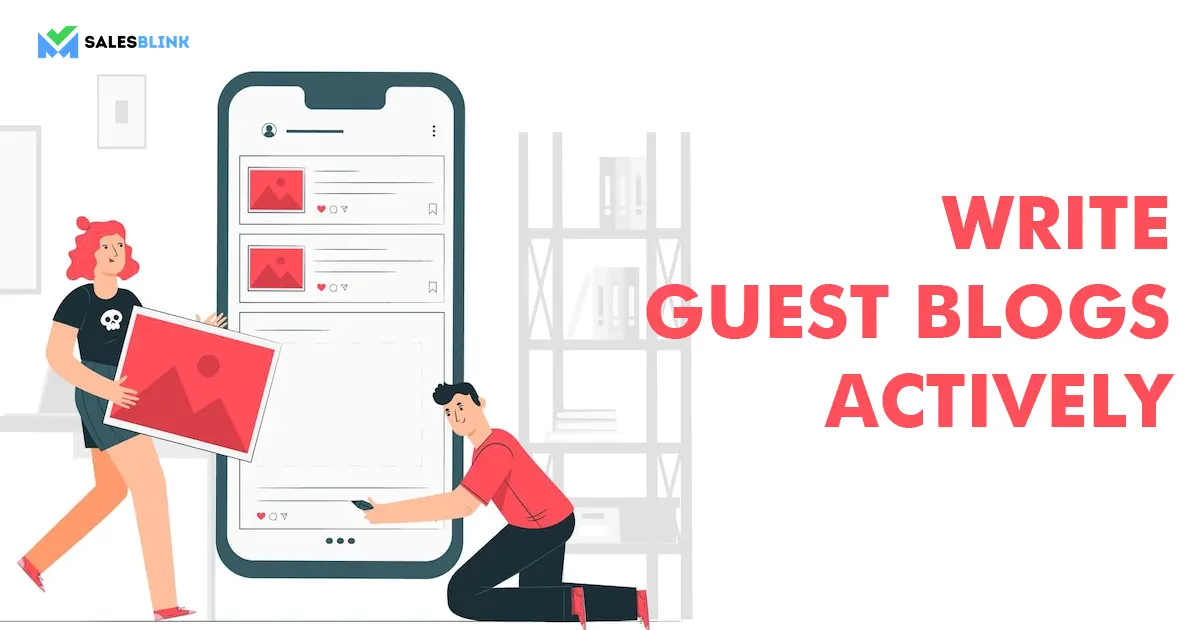
Guest blogging is by far one of the most impactful B2B lead generation strategies. It is fruitful to write guest posts for websites with high search rankings and many website visitors who would find your product or service helpful. It works well from the SEO point of view too. Write well-researched blog posts and send them to websites that publish guest posts. As soon as your blog goes live, promote it on social media to reach the maximum number of people.
5. Provide social proof
Social proof works like magic in generating leads. It clears the doubts leads have about your offering, and it takes them further down the sales funnel. It does seem to be one of the most effective B2B lead generation strategies.
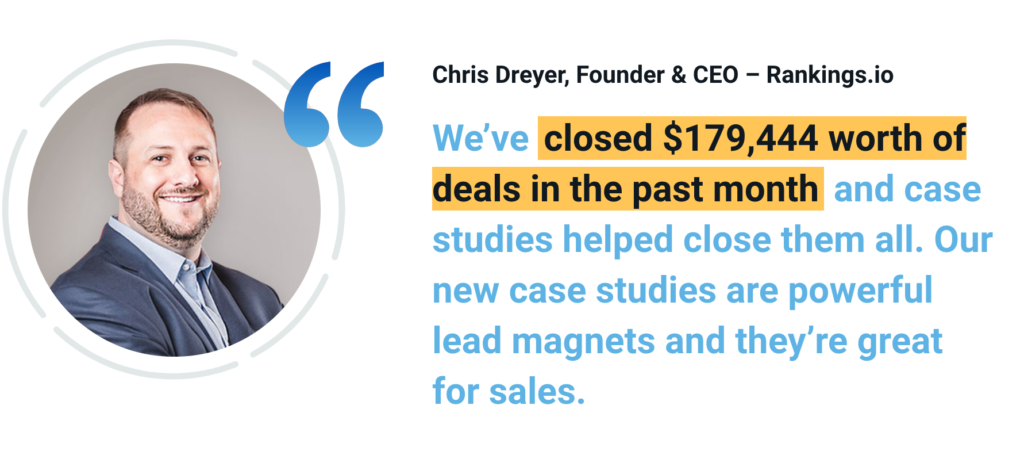
When you provide social proof, you can build trust and increase the chances of closing the deal. It is best to add social proof on your website in the form of testimonials and case studies. It is quite natural for leads to trust you more when they can see other happy customers and read about the success stories of other businesses.
6. Personalize your cold outreach
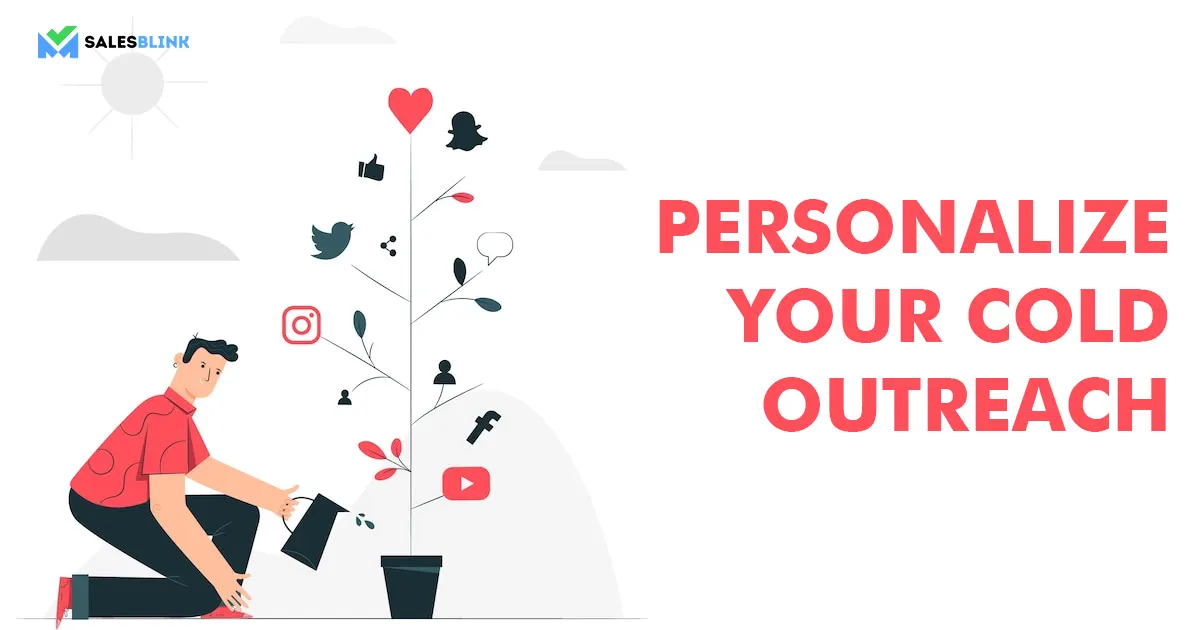
Cold emailing is one way to generate leads effectively, but the issue is getting prospects’ attention in cluttered inboxes. The first thumb rule is that your cold email should not look like it is automated. Nothing is more disappointing for a prospect than to see a template-like message probably sent to hundred other people. You have to personalize the message, for which you have to do some research. If you want to make an impact and get a positive response from a prospect, you have to put in the effort to make the recipient feel important. This is, by large, one of the most important B2B lead generation tips.
7. Keep your website mobile-friendly
A large number of B2B buyers use mobile devices for most of their tasks. Also, those who give them a great mobile experience are their favorites for future purchases. This indicates that you have to optimize your website for mobile devices when you want to close more deals.
It shouldn’t look disproportionate when opened on a tab or smartphone. The text, buttons, menu, and images should not look out of place.
8. Focus on creating a good website design
Good website design is necessary for B2B lead generation as it acts as your brand’s digital storefront. It builds credibility and trust, along with engaging your audience. An intuitive, user-friendly design enhances user experience, providing easy navigation and quick access to valuable content. Clear call-to-actions and forms encourage conversions.
A well-optimized site improves visibility on search engines, attracting more targeted traffic. Furthermore, a responsive design ensures accessibility across devices, catering to a broader audience. Hence, a well-designed website, serving as a key touchpoint in your lead generation strategy, can significantly influence the buyer’s journey, driving lead conversion and business growth.
9. Adding an SSL certificate to your website
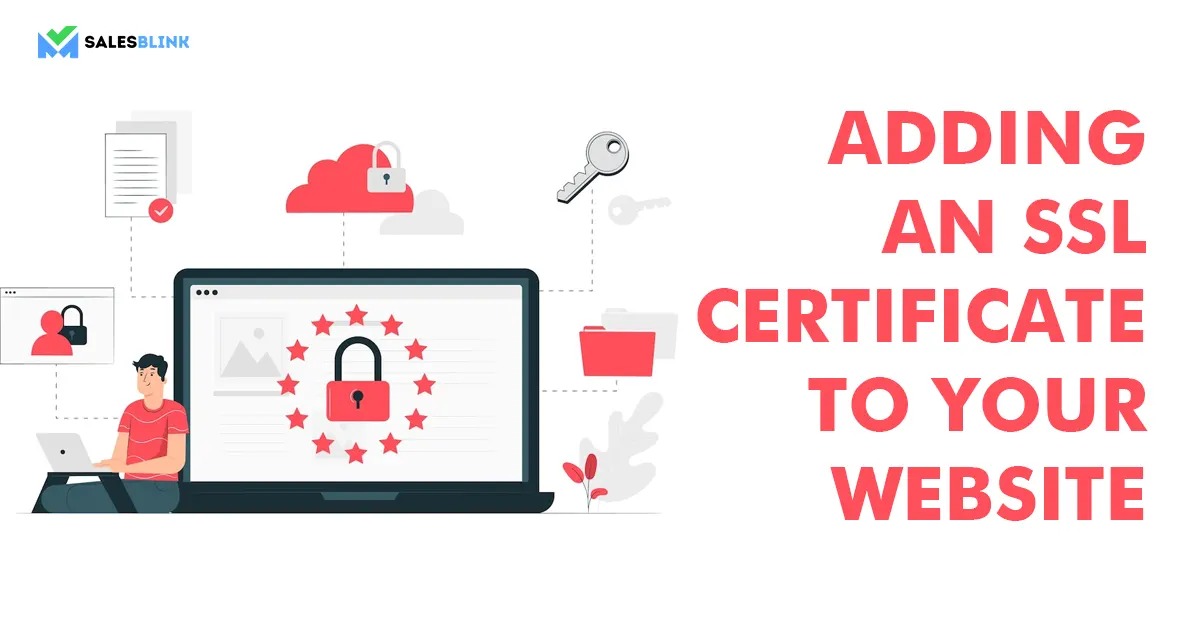
SSL certificates ensure that your website is safe for transactions. It can be done with a single domain, wildcard SSL certificate, and multi-domain SSL certificate. All these types of certificates can deliver the same level of encryption.
10. Stay active on LinkedIn
LinkedIn is one of the most popular professional networking sites that is suitable for B2B businesses. Therefore, marketers rely the most on this platform to distribute content. If you want to reap the maximum benefits from LinkedIn, create a complete profile and write about what your company has to offer. Use keywords to find your page and add user reviews and customer testimonials to find your page to be trustworthy to the readers. You can also add the achievements of the company to make a positive impact on the reader.
Make sure you create engaging content on LinkedIn for prospects to read. Bear in mind that you shouldn’t publish it elsewhere. Keep it unique and add images, videos, infographics, pie charts, and graphs so that the content looks informative and complete.
Create a group relevant to your niche on LinkedIn and stay active. Initiate conversations and add content to it periodically and share it with people in your industry.
11. Build a community on social media
Apart from LinkedIn, you can leverage other platforms too. However, building a new community on any social media channel requires a strategic and focused approach.
First, identify your target audience and make a note of their needs, interests, and where they spend their time. Next, choose the right social media platform(s) based on these insights. Then, start providing engaging content that solves problems or imparts knowledge about your industry or business. This can help to establish credibility and draw the attention of your potential leads.
Next, actively participate in relevant conversations and discussions to foster relationships and network with industry influencers to increase your visibility.
12. Leverage Quora To Get Leads
Quora is an excellent platform to establish yourself or your company as a subject-matter expert, indirectly generating more B2B leads. You increase your brand visibility and credibility by providing thoughtful and helpful answers to questions related to your industry or service. This can attract potential B2B clients searching for industry insights, solutions, or services. Additionally, with Quora’s “Spaces” feature, you can create and manage a community around your industry or topic of interest, providing another opening for direct interaction with potential leads.
Moreover, Quora offers advertising options specifically designed to capture leads. Quora Ads can be particularly beneficial for B2B marketing as it enables targeting specific topics, questions, or even audiences based on their activity. In addition, you can format these ads to capture email addresses or other contact information directly within the ad. Combining organic, high-value content with strategic advertising, Quora can be a powerful tool in a B2B lead generation strategy.
13. Conduct a webinar
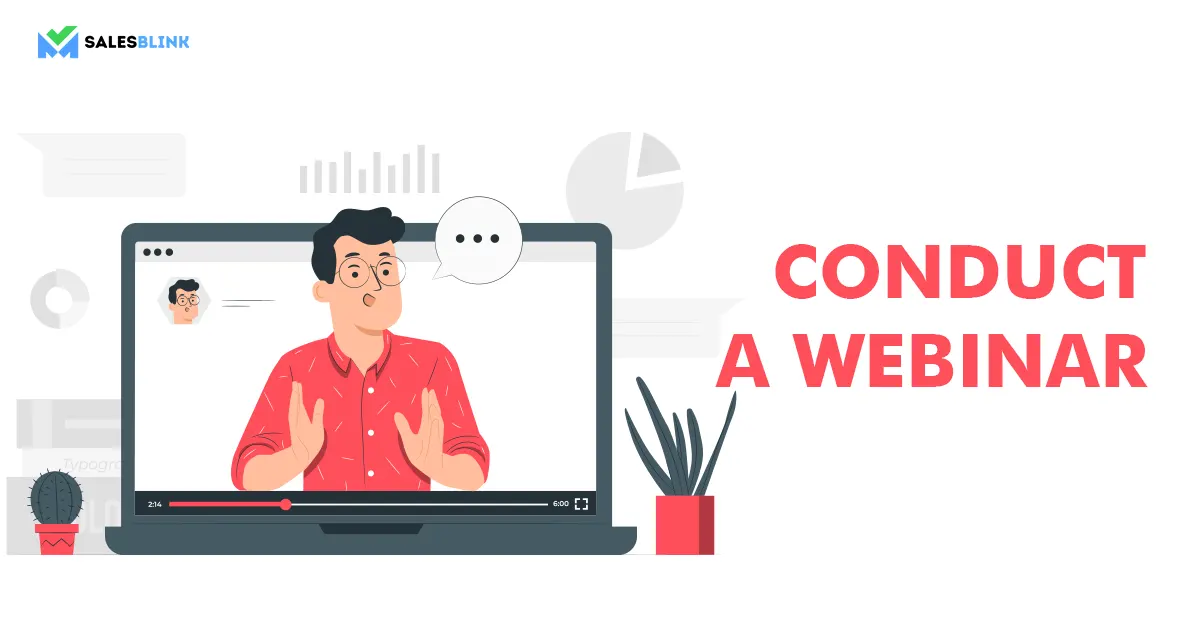
Sales webinars are the in-thing these days as buyers don’t have a lot of time at hand to read pages of text. You can host a webinar not beyond 30-40 minutes in the morning hours and have a QnA session at the end to answer the attendees’ questions. Don’t forget to make a note of the email addresses and other details of the attendees so that you can stay in touch with them in the future. You never know they may get so impressed by your webinar that they may close the deal the very next day!
14. Organize and attend events
While you carry out most of the lead generation strategies online, you still need to step out and put in some efforts offline as well. Organizing live events or attending them is a great way to interact with prospects and one of the best B2B lead generation strategies. The events can be anything from conferences to corporate lunches. While hosting an event, ensure that the topic is interesting enough to get influencers to share their thoughts. Collect details of the attendees with the help of sign-up forms and ask them how they liked the event and what improvements they would like to see the next time.
15. Get user reviews
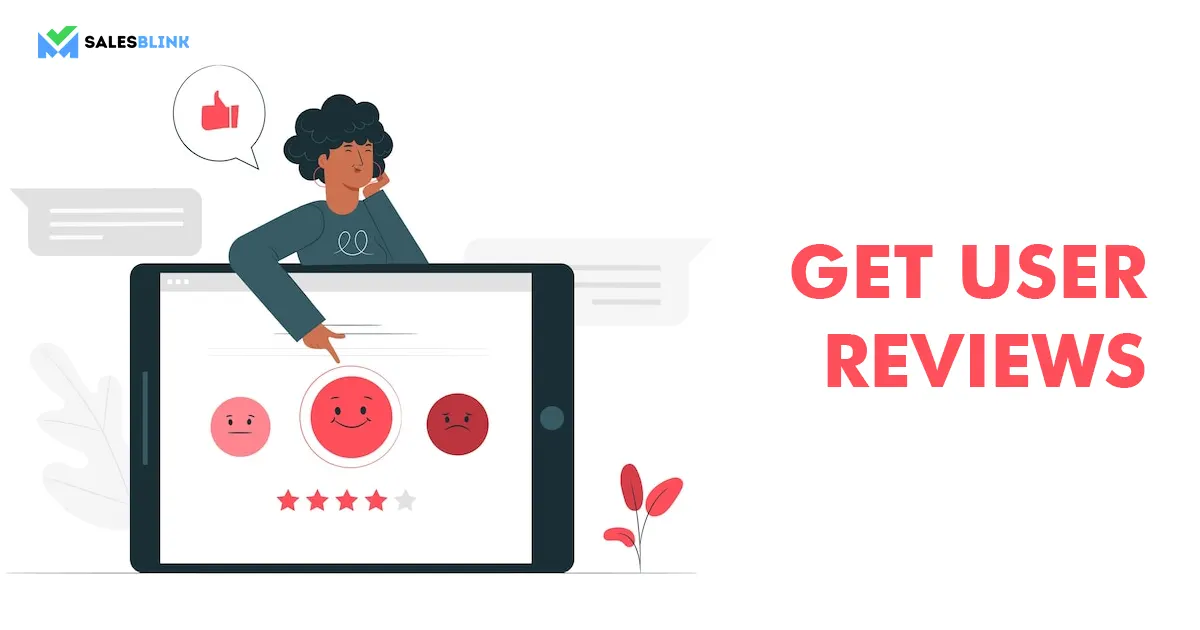
Having testimonials on your website works as social proof. People tend to judge our product or service based on other people’s experiences. So, when they find out that another person was happy with your solution, they feel that they too will find it helpful and therefore take the plunge. So, user reviews and testimonials are an easy and cost-effective way to draw the attention of potential buyers.
When a buyer successfully purchases from you, request them to leave a review about your product or service on your website. Use all those reviews in emails, ebooks, and the like.
16. Ask clients for referrals
One of the best ways of generating leads in the B2B world is through client referrals. A person would prefer to go by a recommendation from someone they know rather than a perfect-sounding sales pitch. Therefore, ask your customers to refer you to people in their circle. Try to send them details of your products or services that they can easily forward to those interested. For the effort they take, you can consider rewarding them with a special discount.
So, these were some of the B2B lead generation ideas and strategies that deliver great results when implemented.
17. Track actions of website visitors
Tracking website visitor actions is vital for generating B2B leads because it provides actionable insights on visitor behavior. These insights reveal the visitor’s interest level, helping businesses tailor their offerings or communications.
By identifying patterns, like pages frequently visited or content downloaded, you can identify potential leads and classify them based on their activity level. This data-driven approach allows for personalization, effective targeting, and timely follow-ups, improving the likelihood of conversion. Moreover, tracking can identify areas of the website that may need improvement, enhancing overall user experience and engagement, thereby increasing the chances of lead generation.
18. Create a free tool
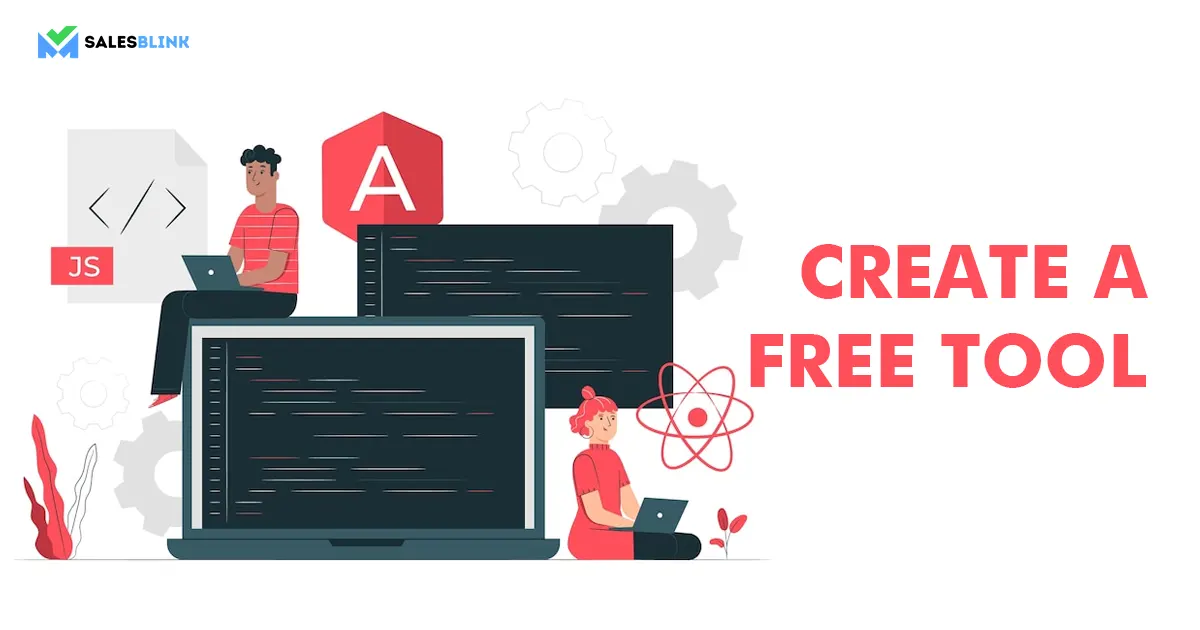
Most leading SaaS companies offer a free tool for lead generation. It works well as the lead can try the tool before purchasing. Also, it would attract leads genuinely interested in using your tool or service. For example, SalesBlink has several free tools, such as a blog post generator, video converter, email editor, email permutator, sales commission calculator, and subject line generator.
It would be best if you also think about building a free tool to draw as many leads as possible to your website.
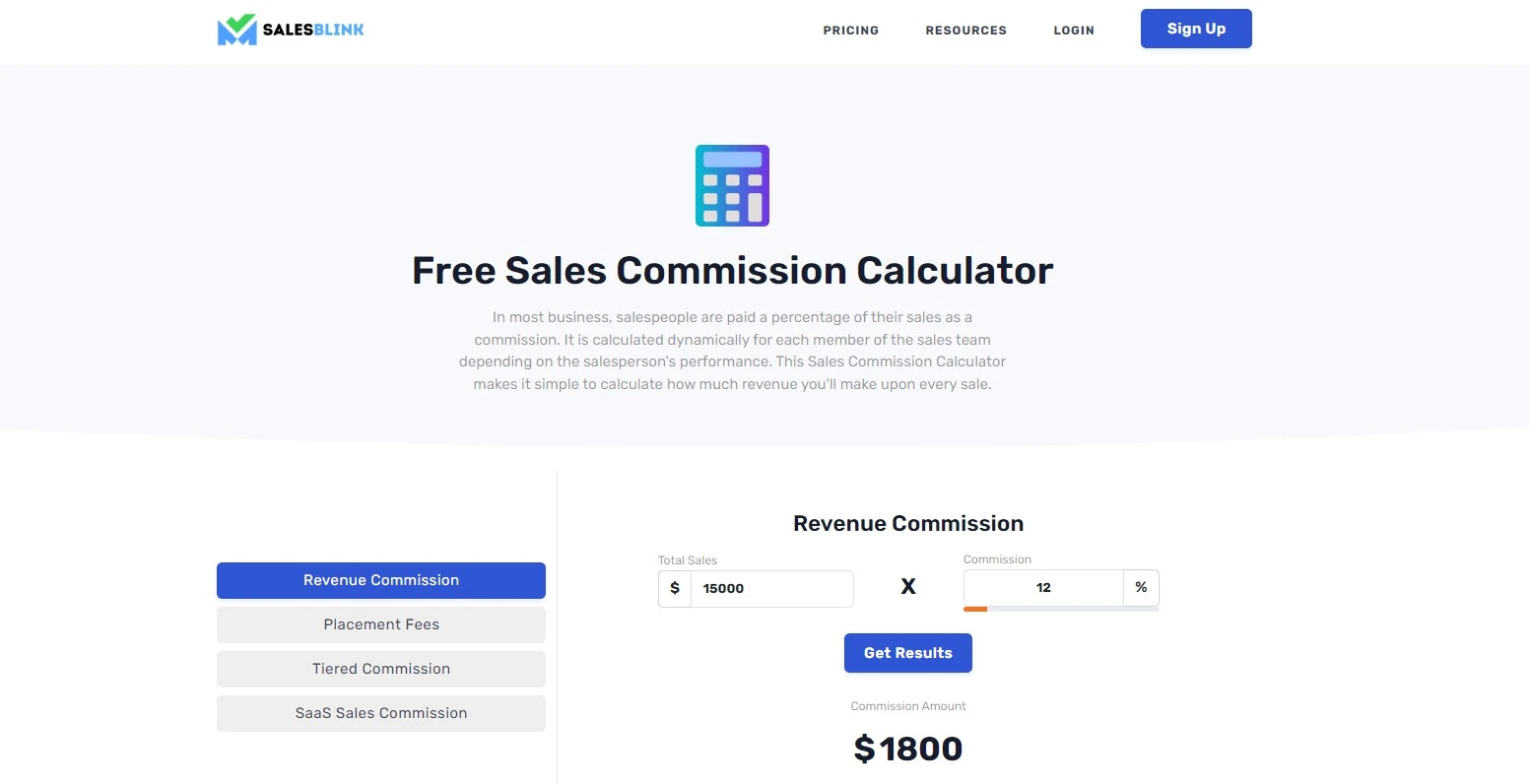
19. Offer valuable lead magnets
A lead magnet is essentially a valuable resource that you can offer in exchange for the leads details such as email address. To create an effective magnet, make sure that your content is in-depth and not similar to a blog post, or else your effort will go down the drain. It has to add value to the reader, Therefore, you must use extreme caution while constructing your lead magnet definition. Here’s what you can try offering:
- Detailed guides
- Checklists or workbooks
- Templates
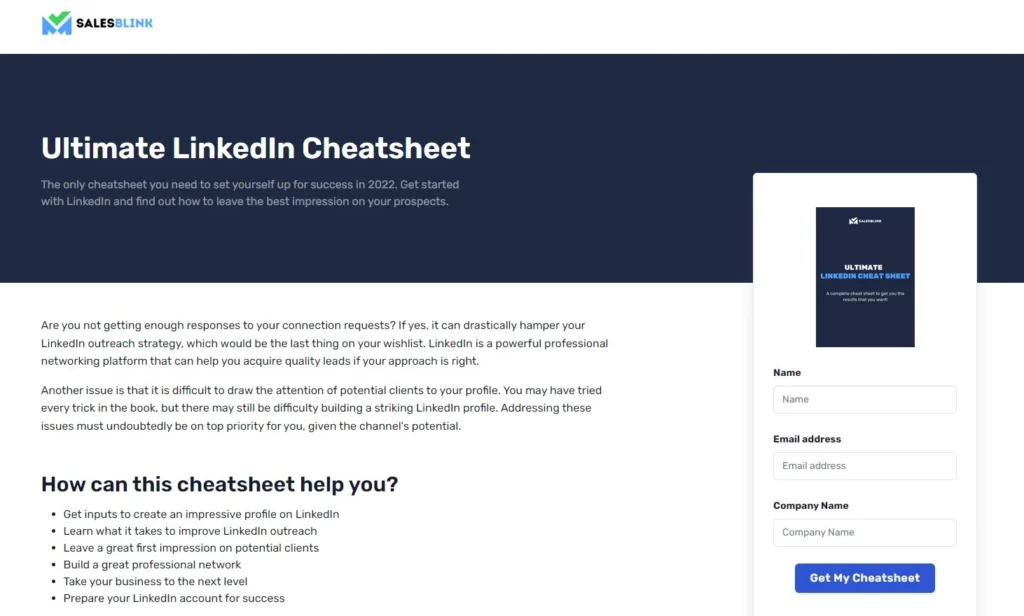
20. Create YouTube Videos
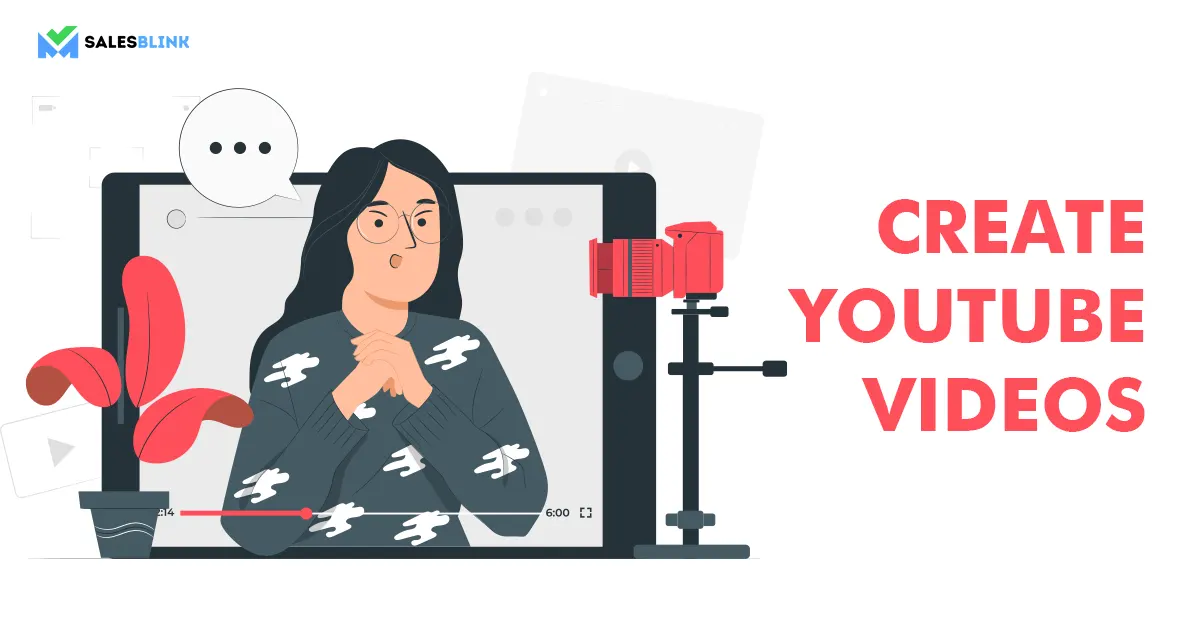
We all like to watch videos instead of reading blog posts, so why shouldn’t you make the most out of them?
It’s not surprising to know that YouTube is one of the most searched platforms for videos, and if you want your presence to be felt, you should leverage it.
Does that sound like extra effort? Actually, no! You can repurpose your blog content and create informative videos to help generate leads. Repurposing content is better if you want a higher ROI.
21. Make the most of FOMO
Leverage FOMO (Fear of Missing Out) in B2B lead generation by creating exclusivity around your products/services. Limited-time offers, exclusive memberships, or early access to new products can build FOMO, prompting prospects to act quickly. Promote these opportunities through content marketing, social media, and targeted emails. Highlight testimonials from businesses who’ve benefited, building a sense of urgency and reinforcing the idea that others are already capitalizing.
With this we come to the B2B lead generation strategies.
B2B Lead Generation Tools
B2B lead generation tools can help you with generating leads. Let’s take a look at them,
1. Tools for generating inbound leads
Quora
It helps prospects know about your business and your areas of expertise. It helps build authority and makes your business’s presence felt.
LinkedIn Sales Navigator
With this lead capturing tool, you get recommendations and discover who visited your profile.
It can therefore help you with generating inbound leads.
Leadfeeder
It helps you find out who visited your website even if they don’t leave their details. That’s something you will definitely find useful!
Drift
This tool uses conversational marketing to prequalify leads with the help of live chat boxes and bots that do most of the work for you.
ProProfs Survey Maker
You can use this tool to design pop-up forms to turn visitors to leads and create surveys to get prospect details. There are detailed reports as well to help you know the performance of the pop-ups.
2. Tools for generating outbound leads
You need to find leads and reach out to them through multiple channels like phone, email, and LinkedIn for outbound lead generation.
Hunter.io
It is possible to find email addresses connected to a domain using this tool. You can easily pick the prospect you want to reach out to without having to spend a lot of time finding them one by one.
Datanyze
It is an outbound tool for sales that helps reduce the time spent on prospecting. It even helps you find the tools used by potential customers, and you can easily find leads based on the software they use.
3. Tools for on-page lead generation
For on-page lead generation, you require tools that can catch leads on your company’s website. It is Unbounce for building attractive landing pages and Intercom to facilitate direct interaction with website visitors.
Unbounce
You can use the tool for building attractive landing pages. It has a drag-and-drop builder that makes the tool easy to use. However, it has the most advanced features to offer.
Intercom
This tool facilitates direct interaction with website visitors. You can communicate with leads based on the conditions you set.
OptinMonster
It is a good idea to use pop-ups for marketing. For that, you can use OptinMonster as it is quite easy to add to any page, and you can perform split testing (A/B testing) to enhance the performance of pop-ups.
Qualaroo
This tool is perfect for lead generation as you can set it up to ask a series of questions to the visitors to determine whether to schedule a call or ask for their email address.
4. Tools for search marketing
Some tools help bring traffic to your website through organic and paid search. There are tools like SEMRush for the upkeep of the health of your website.
SEMrush
This tool is the best for online site auditing and checking the health of websites (SEO). While the tool is famous for its keyword research abilities, its site audit function is also equally good.
Google Analytics
With Google Analytics you can track the performance of a landing page and set up remarketing lists so that you can bring visitors back to your site.
Ahrefs
This is an SEO tool, but it can work well as a link building tool too. It provides detailed reports and complete technical SEO information of your site.
Get Ready To Use B2B Lead Generation Strategies To Improve Conversions
For any business to grow, you have to generate leads. That requires you to reach out to a target audience. The step-by-step lead generation process and the strategies to generate leads you just read above are effective and can fetch you excellent results. The list is not exhaustive, and there are many other B2B lead generation techniques and strategies that work well. Feel free to try out what works the best for you.
We hope our B2B lead generation strategies & the list of best B2B lead generation tools is useful!
Wish you all the best with lead generation!
FAQs
B2B lead generation refers to identifying potential customers and attracting them to make a purchase. This activity is crucial for sales and marketing teams in B2B organizations.
For any business to grow, you have to generate leads. That requires you to reach out to a target audience using a step-by-step lead generation process and the strategies to generate leads.
While you need to scale up your business, you must focus on quality. You can improve the quality of leads using targeted keywords, designing targeted landing pages, and designing forms.







